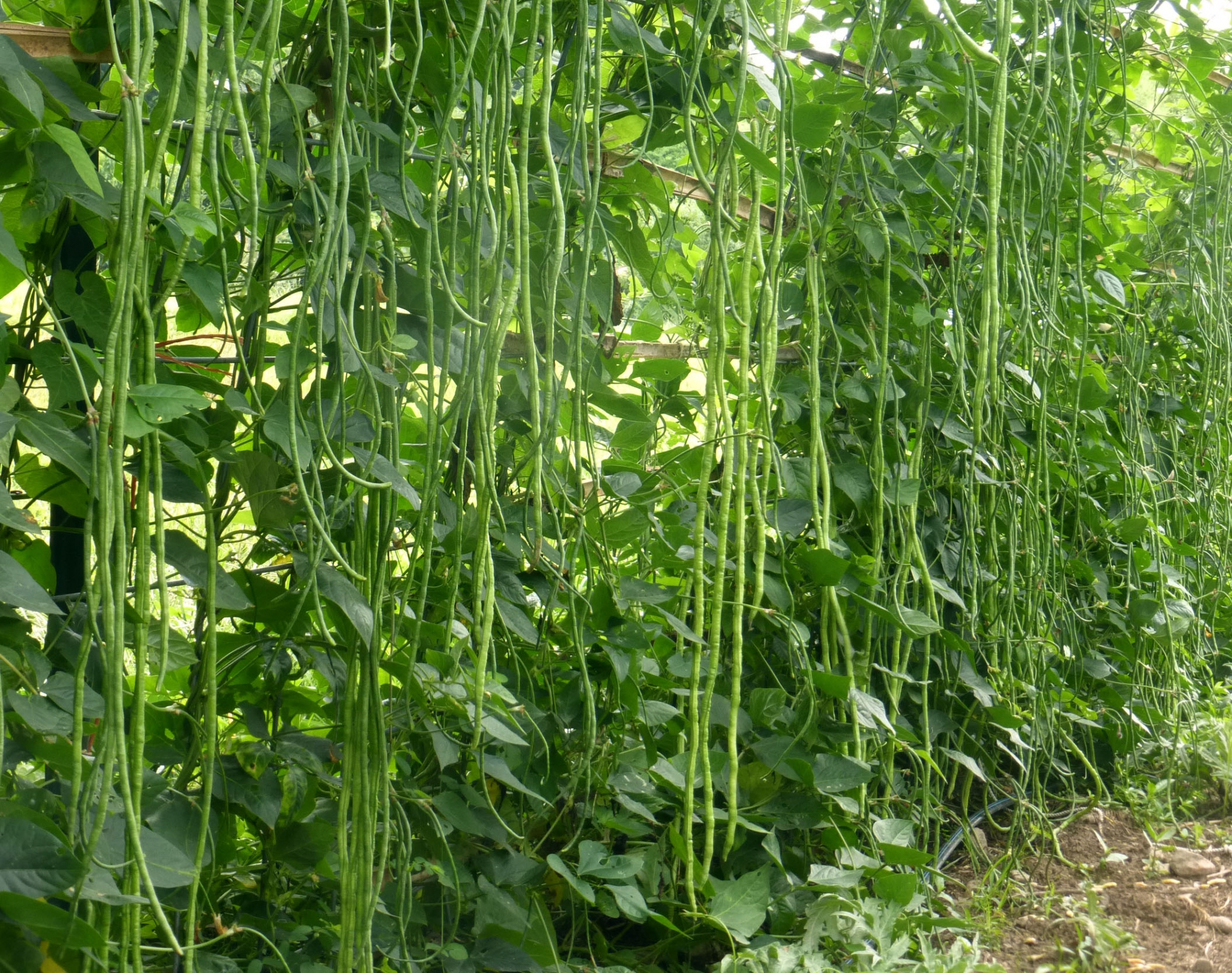Chewy and flavorful yard long beans, also known as Chinese snake beans, are closely related to black-eyed peas. Its immature, tender, edible pods are one of the most popular pod-vegetables used in the Philippines and other East Asian cuisines. The beans are also grown in small scales in the home gardens in Southern United states, West-Indies as well as in the Mediterranean regions.
The yard long pods are actually legumes belonging to the Fabaceae family. The beans were thought to have originated in southern Chinese Yunnan province. Scientific name: Vigna unguiculata, sub. sesquipedalis. Some of the common names include asparagus-bean, string-bean or Chinese snake beans. The beans in general recognized by local names as bora (West Indies), dau gok (China), pole sitao (Philippines), etc.
Yard-long bean is a fast growing annual plant; require trellis to support its growth. Dwarf and tall climbing varieties exist. Depending upon the cultivar type, it bears blue to violet flowers after about 6-10 weeks of seedling. Numerous pencil thin, tender, light-green, flexible-textured pods appear after about another two to four weeks following flowering. These fleshy, pendulous pods are usually harvested while they are immature and eaten as green vegetables. The pods vary in length that ranges from 30 to 80 cm.
As in other bean varieties, harvesting may not be a time-guided event. The pods usually harvested early for young, immature beans, or they may left on the shrub to dry-out in order to obtain dried beans.
Health benefits of yard long beans
♥ Yard-long beans are one of the ancient cultivated crops. Young, immature pods are one of very low calorie vegetables; 100 g beans contain just 47 calories.
♥ The pods contain large quantities of soluble and insoluble fibers. Since the entire green pod is eaten as in french-beans, sufficient amount of dietary fiber is obtained in the diet. Dietary-fiber helps to protect the mucousa colon by decreasing its exposure time to toxic substances as well as by binding to cancer-causing chemicals in the colon. Fiber rich food also found to reduce LDL-cholesterol levels by decreasing re-absorption of cholesterol binding bile acids in the colon.
♥ Fresh yard-long beans are one of the finest sources of folates. 100 g beans provide 62 µg or 15% of daily requirement of folates. Folate along with vitamin B-12 is one of the essential components of DNA synthesis and cell division. Adequate folate in the diet around conception and during pregnancy may help prevent neural-tube defects in the newborn baby.
♥ Fresh beans contain a good amount of vitamin C. 100 g yard-long beans provide 18.8 mg or 31% of vitamin C. Vitamin C is a powerful water-soluble antioxidant and when adequately provided in the diet, it helps build immunity against infections, help maintain blood vessel elasticity, and offer some protection from cancers.
♥ Furthermore, the long beans are excellent sources of vitamin A. At 865 IU per 100 g, the beans have more of this vitamin than that of the other same family legumes such as lima beans, fava, green beans, etc. Vitamin A is one of the essential vitamins for the body provided through our diet. Vitamin A maintains mucus membrane integrity, enhances skin complexion, and improves night vision.
♥ In addition, yard long beans provide average amounts of minerals such as iron, copper, manganese, calcium, magnesium. Manganese is used by the body as a co-factor for the powerful anti-oxidant enzyme, superoxide dismutase.
Source: Nutrition and You
Link source








Add a comment